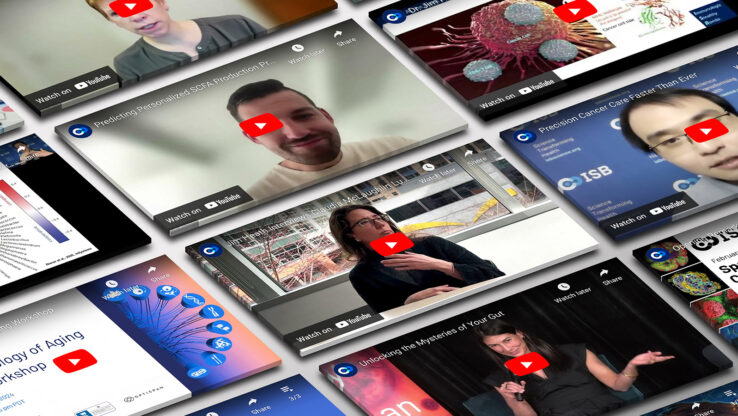High School Duo Named Champions in DOE-Sponsored AlgaePrize Competition
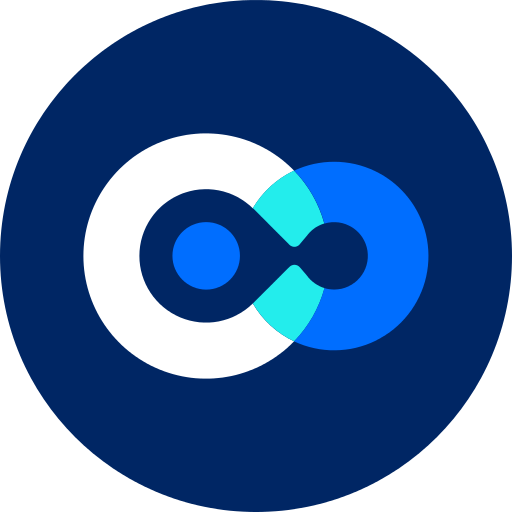 isbscience.org/news/2023/08/10/high-school-duo-named-champions-in-doe-sponsored-algaeprize-competition/
isbscience.org/news/2023/08/10/high-school-duo-named-champions-in-doe-sponsored-algaeprize-competition/UPDATE
On August 9, ISB Senior Research Scientist Dr. Jacob Valenzuela hosted a Research Roundtable conversation with Rohan Chanani and Ashwin Mukherjee. As high school students, Chanani and Mukherjee worked on a project under the guidance and mentorship of Valenzuela. The project – Algaeorithm – was to build a machine learning algorithm to count algal cells from microscope images taken from a cell phone. In April 2023, the team was recognized as champions in a Department of Energy-sponsored AlgaePrize competition.
Watch the conversation by clicking play above or by going here. And continue reading to learn more about the Algaeorithm project.
Original story published on April 26, 2023:
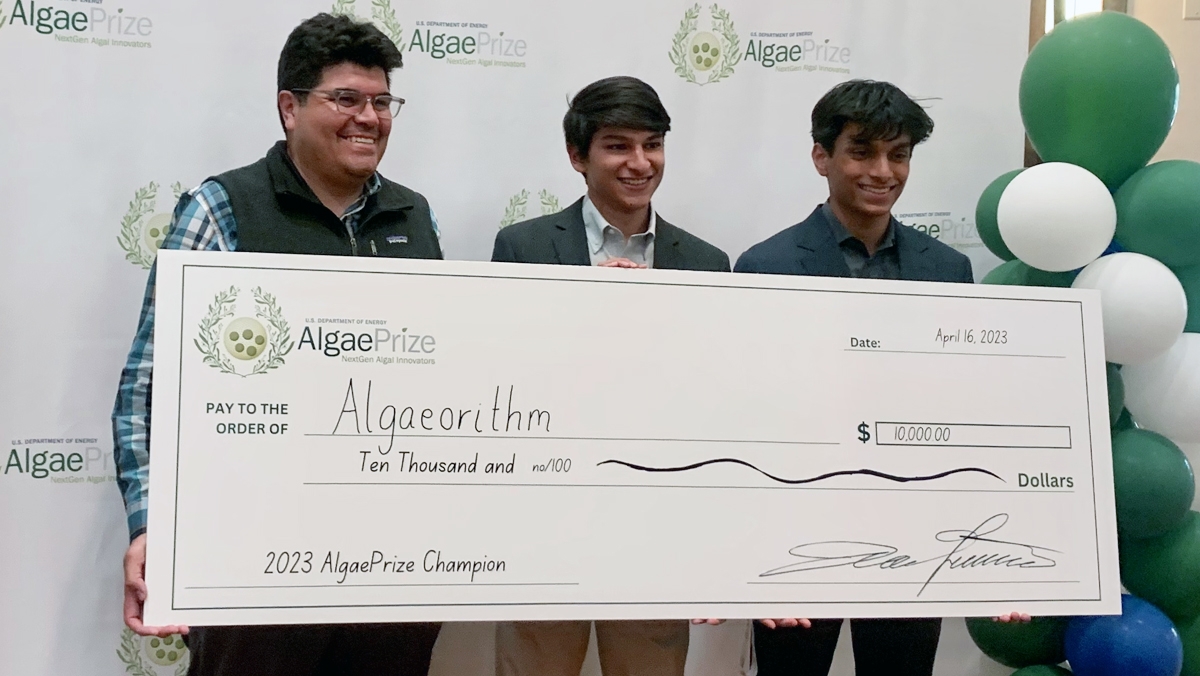
High school students Rohan Chanani and Ashwin Mukherjee, center and right, and ISB Research Scientist Dr. Jacob Valenzuela were awarded a $10,000 prize for Algaeorithm, the project they submitted in the Department of Energy-sponsored AlgaePrize competition.
Two summers ago, cousins Ashwin Mukherjee and Rohan Chanani reached out to ISB Research Scientist Dr. Jacob Valenzuela in search of a project they could work on while the world was shut down by the COVID-19 pandemic. In mid-April, they were recognized as champions in a Department of Energy (DOE)-sponsored competition – an honor that came with a $10,000 reward.
“What a wild ride,” Valenzuela said. “These two put in a tremendous amount of thought and effort into their work, and I’m extremely proud of them for what they’ve accomplished.”
In 2021, Mukherjee, a high school student from the San Francisco Bay Area, and Chanani, a high school student from Atlanta, both participated in ISB’s Systems Thinkers in STEM Ambassadorship (STiSA) program. Amid the COVID lockdown, the duo was looking for a research project.
“Rohan and I had wanted to work together on a technology- and/or science-related project for a while,” Mukherjee said. “In my STiSA program – ‘Bioengineering a Sustainable World’ – Jake was one of the instructors. He clearly enjoyed working with students and was deeply knowledgeable about algae and bioenergy, so I decided to reach out and see if he had any suggestions for a computational biology project Rohan and I could work on.”
Valenzuela had an idea based on the two students’ unique skill sets and the needs of high school classrooms. He started Mukherjee and Chanani with a challenge to build a machine learning algorithm to count algal cells from microscope images taken from a cell phone. They called it “Algaeorithm,” and their goal was to engage future scientists, engineers and entrepreneurs about the bioenergy industry while introducing students to the potential of machine learning in solving the world’s energy problems.
Last year, Valenzuela encouraged the students to submit their project in the inaugural AlgaePrize Competition, sponsored by the DOE Bioenergy Technologies Office. The competition prompts student teams from across the country to “pursue innovative ideas for the development, design, and invention of technologies within the commercial algae value chain.”
Mukherjee and Chanani were just one of 64 teams who applied for the competition, and one of 14 named AlgaePrize finalists and selected to partake in the year-long competition.
“It was very rewarding to know that our work had been recognized by industry experts and given both the opportunity and resources to advance,” Mukherjee said.
Impressively, they were the only high school team, and they competed against teams made up of undergraduate, Masters and PhD students.
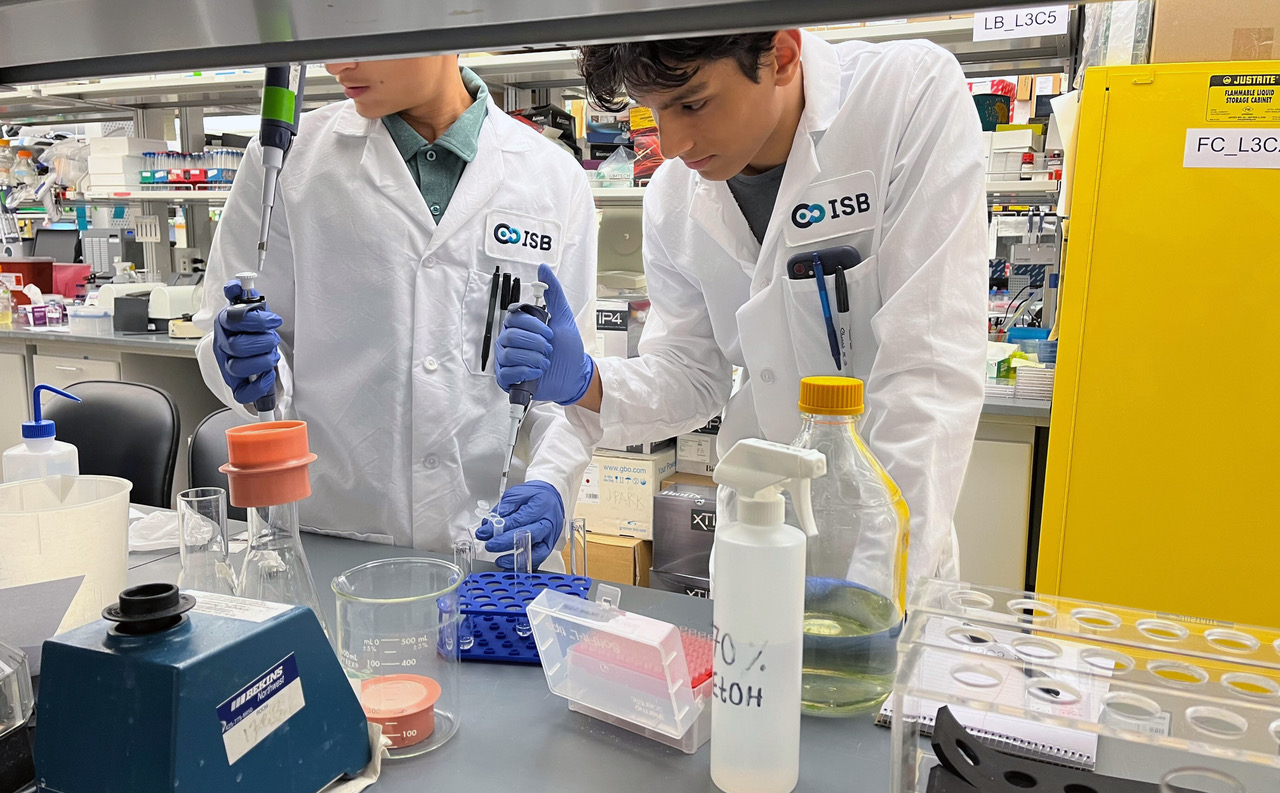
Chanani, left, and Mukherjee are pictured last summer during their two-week visit to ISB in Seattle.
“The fact that these two high schoolers not only competed, but thrived against college-level competition is incredibly impressive and inspiring,” said Valenzuela, who served as project advisor.
Upon being selected as finalists, Mukherjee and Chanani were given $5,000 to invest in their work. Last July, they traveled to Seattle and joined Valenzuela at ISB as part of the Systems Education and Experiences (SEE) program and created a more sophisticated and robust version of Algaeorithm.
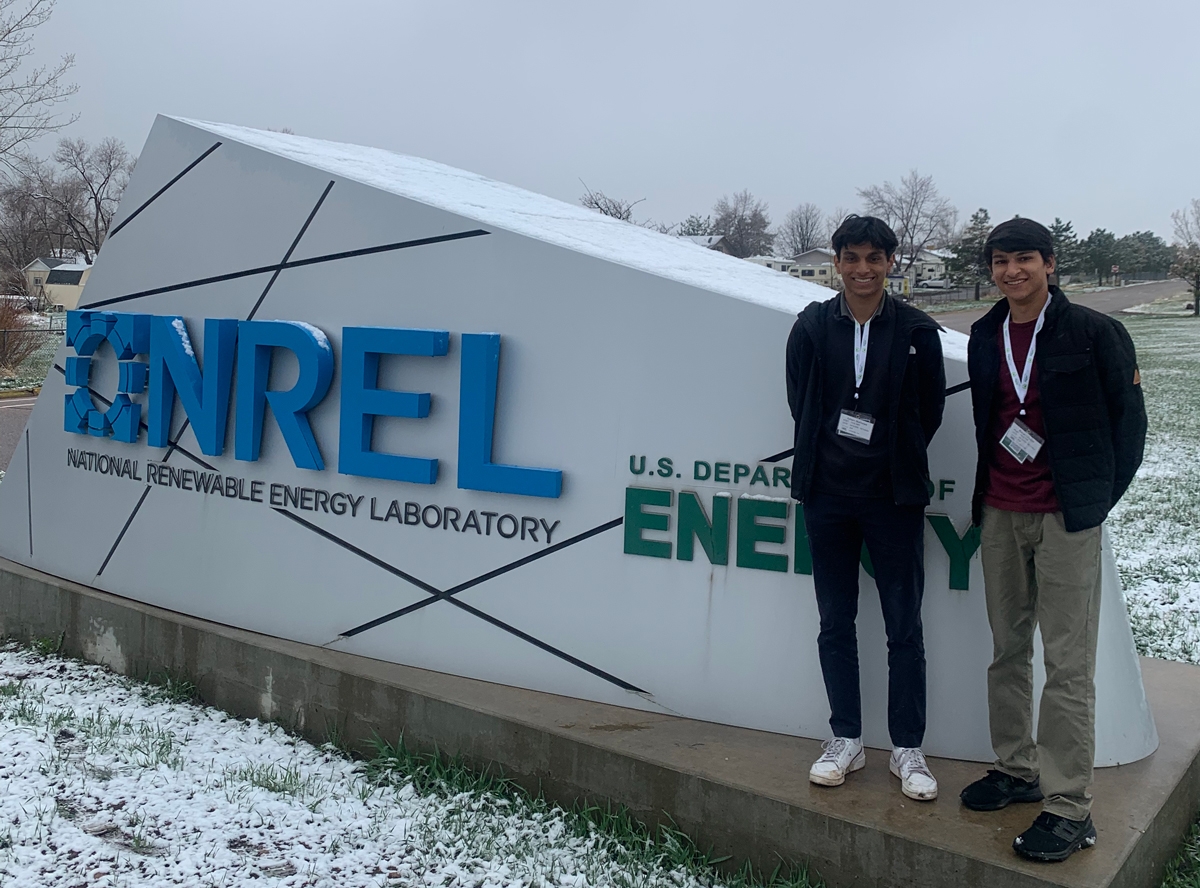
Mukherjee, left, and Chanani are pictured outside the National Renewable Energy Laboratory in Golden, Colo., in April 2023.
The year-long competition required the team to deliver three quarterly reports, and ultimately to present a 25-page final report, a short video about the project, a comprehensive poster, and an in-person presentation at the National Renewable Energy Laboratory (NREL) in Golden, Colo. They presented their project at NREL on April 14-16. While there, Mukherjee, Chanani and Valenzuela connected with science and business leaders across the bioeconomy, discussed projects with other teams, and toured NREL’s state-of-the-art facilities.
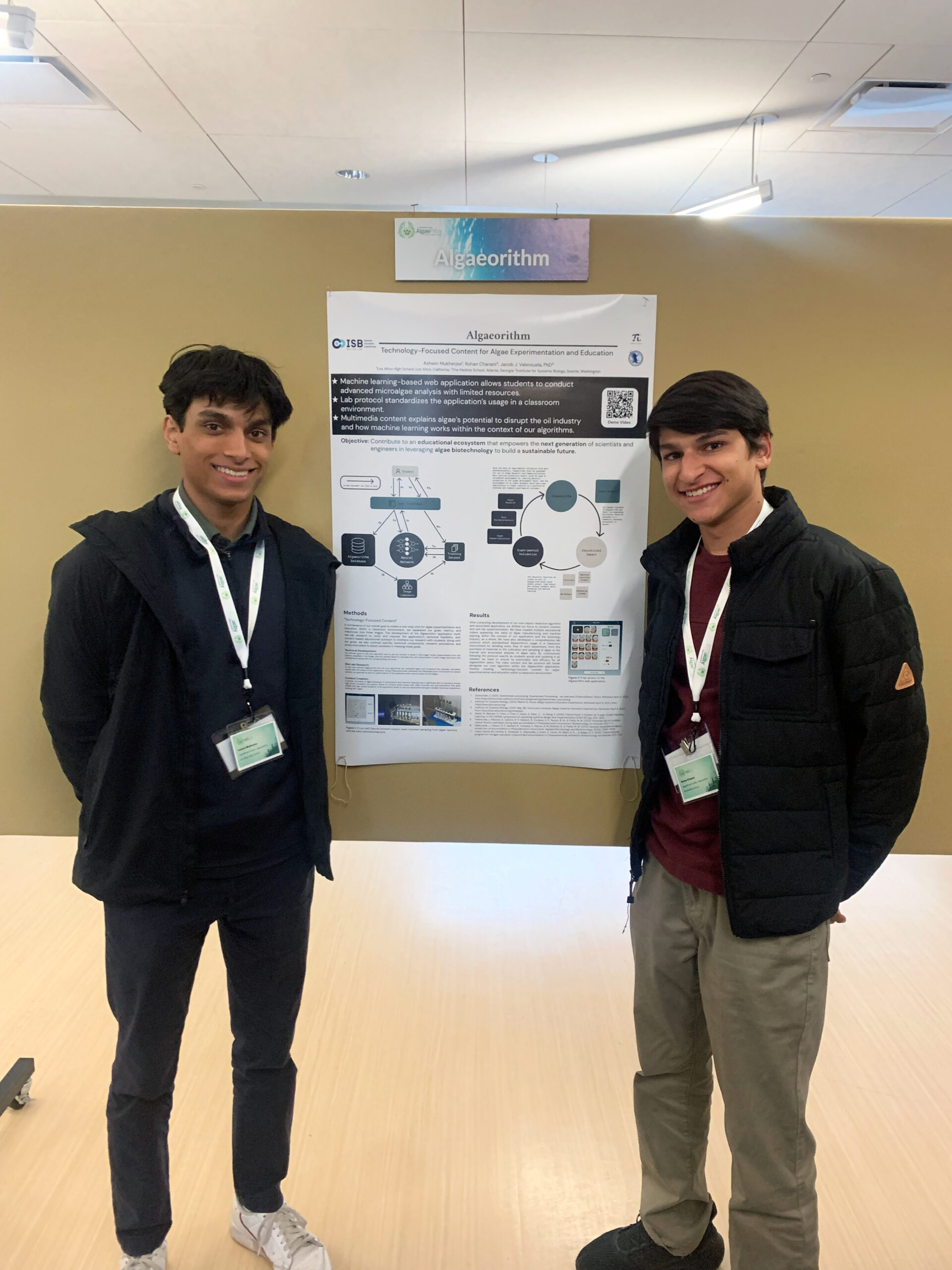
Mukherjee, left, and Chanani are pictured next to their poster at the National Renewable Energy Laboratory in Golden, Colo.
“The most exciting part of the competition for me was the opportunity to present at NREL in front of industry experts. Reading about and ultimately experiencing the competition felt well beyond anything I thought was accessible to high school students,” Chanani said.
Of the 14 teams competing in the finals, five champions were selected, one of which was the Algaeorithm project. That distinction earned the team a $10,000 award. They also won the Best Presentation Award.
“Being selected as finalists and ultimately champions felt unreal,” Chanani said. “We were very happy with our initial proposal, so I was confident going into the initial selection stage, but becoming champions exceeded our expectations going into the competition.”
As seniors in high school, Mukherjee and Chanani will soon transition to university, where they can apply their new skills and experiences to help them achieve new personal and career goals in STEM.
Algaeorithm will be integrated into existing SEE curricula and optimized over the next year from feedback of teachers and students. This will ensure Algaeorithm lives on and connects with thousands of students each year.
“From start to finish, everything about this experience has made me grateful for the people that made it possible, especially Jake. Since our first prototype, every milestone has escalated the project beyond what I thought was possible, and none of that would have happened without the constant support we’ve received,” Chanani said. “Presenting at NREL and becoming champions was a fitting culmination of everything that’s gone into Algaeorithm over the past year and a half, and I’m thrilled that we had that opportunity to share and be recognized for our work.”
Added Mukherjee: “Building Algaeorithm and competing in the AlgaePrize has been an immensely valuable experience as far as science and tech goes, but also in learning about design, communication and entrepreneurship. I’m extremely grateful that mentors like Jake and organizations like ISB were willing to extend a helping hand to guide us through this process and ultimately toward success.”
Learn more about Algaeorithm by watching this short video and by checking out the team’s presentation, final report and poster.



